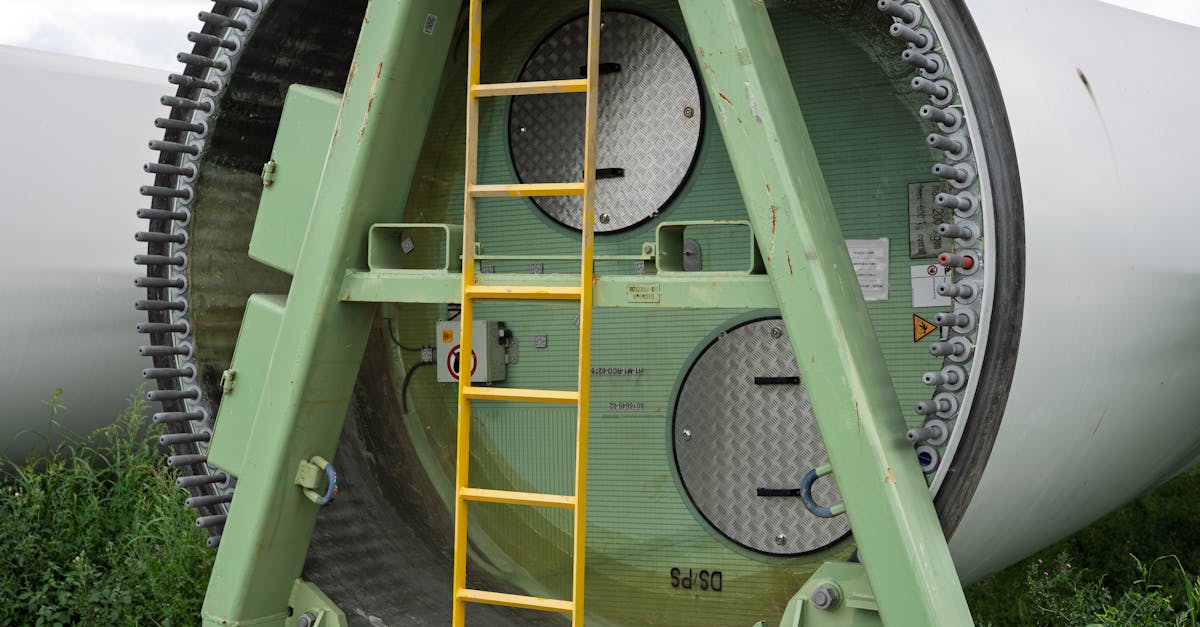Green Manufacturing Cutting Costs Reducing Carbon Footprints
Introduction to Green Manufacturing
In an era where sustainability is paramount, green manufacturing emerges as a game-changing innovation for industries across the globe. By integrating eco-friendly practices, manufacturers are ensuring they leave a smaller carbon footprint while simultaneously cutting costs. But what does green manufacturing entail? Essentially, it's the adoption of processes that reduce waste, conserve energy, and emphasize the use of sustainable materials. With environmental concerns skyrocketing, there’s a growing demand for industries to be more accountable in their operations. By prioritizing green practices, businesses not only benefit the planet but also tap into numerous economic advantages. The drive towards green manufacturing is more than just a trend; it’s a sustainable business model for the future.
Advertisement
Understanding the Core of Green Manufacturing
At its heart, green manufacturing focuses on minimizing waste and promoting resource efficiency. Industries that push for green practices often undergo a comprehensive overhaul of their operations, aiming to optimize the use of raw materials and energy. This includes redesigning manufacturing processes to consume less power and raw materials. Embracing recycling is another cornerstone, as it reduces dependency on virgin resources. A quintessential element of green manufacturing is the emphasis on reducing emissions, achieved by employing cleaner production technologies or switching to renewable energy sources. By implementing these strategies, companies see a significant decrease in operational costs, manifesting in an eco-friendly and cost-effective approach to production.
Advertisement
Technology's Role in Green Manufacturing
Advancements in technology play a crucial role in promoting green manufacturing. IoT sensors, for instance, offer real-time data to monitor energy consumption and equipment efficiency. These insights help in fine-tuning operations, ensuring minimal wastage. 3D printing, another notable technology, reduces material waste by allowing precise material usage. Furthermore, automation paves the way for more consistent production with fewer defects, leading to lower operational waste. Using AI to predict maintenance needs also prevents unnecessary downtime, saving both time and resources. This perfect blend of technology and sustainability illustrates how businesses can smartly reduce their environmental impact while maintaining high production quality.
Advertisement
Economic Advantages of Going Green
Green manufacturing provides a competitive edge, translating eco-friendliness into economic benefits. Initially, setting up green initiatives may require investment, but the resulting savings offset these costs in the long run. Companies experience reduced utility bills due to energy-efficient practices, and recycling reduces the need for new raw materials. Additionally, tax incentives and grants are available for businesses adopting sustainable methods. Green branding notably attracts environmentally conscious consumers, potentially boosting sales. Companies are also better positioned to comply with evolving regulations, avoiding potential fines. Consequently, by embracing green manufacturing, businesses not only protect the environment but also build a more profitable future.
Advertisement
Sustainable Material Sourcing
Choosing sustainable materials forms the backbone of green manufacturing. Industries can significantly reduce their carbon footprint by opting for materials that are either recycled or produced with minimal environmental harm. This eco-friendly approach extends to sourcing locally, which reduces transportation emissions. The use of biodegradable and renewable resources further supports sustainability goals. An innovative example of sustainable material use includes bioplastics, derived from natural sources like corn starch, which significantly cut down plastic waste. By making thoughtful choices concerning materials, businesses illustrate their commitment to environmental stewardship while cutting down costs associated with less sustainable alternatives.
Advertisement
Waste Management and Recycling
An essential focus of green manufacturing is effective waste management. Implementing robust recycling programs not only conserves resources but also reduces landfill impact. Many companies now employ circular economy principles, where waste is repurposed as valuable inputs for other processes. This method maximizes efficiency and minimizes the depletion of natural resources. Additionally, waste-to-energy conversion can transform by-products into usable power, further cutting energy costs. Through these integrated waste management practices, businesses not only contribute to environmental well-being but also achieve significant cost savings.
Advertisement
Innovative Energy Solutions
Switching to renewable energy sources forms a critical component of green manufacturing efforts. Solar panels, wind turbines, and other renewable energy installations are becoming commonplace in industrial facilities. While the initial investment can be substantial, the long-term savings from reduced utility bills are invaluable. Additionally, these energy sources are cleaner, leading to further reductions in carbon emissions. Implementing smart energy grids to manage and optimize electricity distribution within manufacturing plants further exemplifies innovation in this realm. Such strides endow companies with energy security, independence from fluctuating fuel prices, and a sustainable pathway towards carbon-neutral manufacturing.
Advertisement
Encouraging Global Regulations and Policies
The shift towards green manufacturing is bolstered by supportive global regulations and policies. By setting targets and guidelines, governments encourage industries to transition toward sustainable practices. Policies often offer incentives like tax rebates or subsidies for businesses investing in eco-friendly technologies. International agreements such as the Paris Agreement push industries to prioritize carbon reduction. These frameworks create a level playing field, urging all businesses to adopt sustainability initiatives equally. As governments further tighten regulations on emissions and resource usage, voluntary compliance with green practices becomes not only beneficial but essential for long-term business viability.
Advertisement
Challenges on the Path to Sustainability
Despite the myriad benefits, the transition to green manufacturing faces several challenges. High upfront costs for new technologies and infrastructure can deter some businesses. There is also a skills gap, with the need for training personnel to operate new, advanced machinery. Moreover, aligning stakeholders, from suppliers to employees, with sustainability goals can be complex. Regulatory compliance adds layers of complexity. However, addressing these challenges with foresight can yield immense payoffs. By embracing collaboration, innovation, and education, businesses can surmount these obstacles and fully capitalize on green manufacturing's benefits.
Advertisement
Conclusion: The Future is Green
As the world continues to prioritize sustainability, green manufacturing sets the blueprint for future industrial practices. The marriage of technological innovation with eco-conscious strategies not only reduces environmental impact but also slashes costs. By adopting greener methods, businesses bolster their competitive edge, aligning themselves with evolving consumer expectations and regulatory requirements. Through continuous dedication and innovation, the potential for entirely sustainable manufacturing landscapes becomes not only a possibility but an impending reality. Ultimately, businesses investing in green manufacturing today are paving the path for a cleaner, economically viable future for generations to come.
Advertisement
